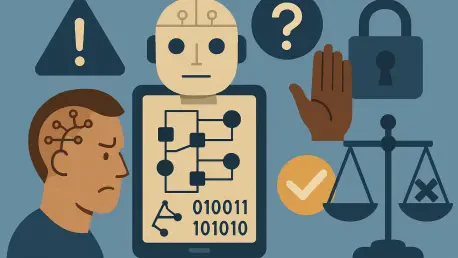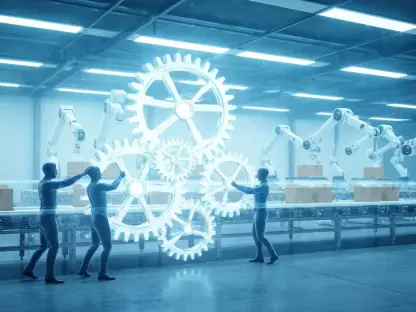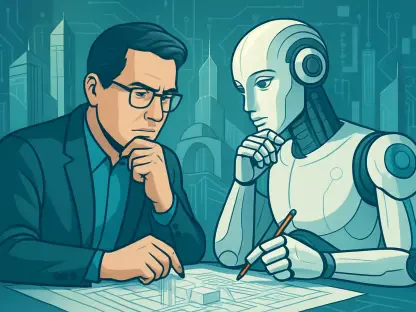In the ever-evolving landscape of technology, developers find themselves at the intersection of innovation and skepticism. Vijay Raina, a recognized expert in enterprise SaaS technology and software architecture, offers his insights into the results of the 2025 Stack Overflow Developer Survey. This conversation explores the growing usage of AI tools among developers and the concerns that accompany this trend.
Can you share an overview of the key findings from the 2025 Stack Overflow Developer Survey?
The 2025 survey indicates a significant shift in how developers interact with AI tools, highlighting a growing dichotomy between AI adoption and the trust placed in these tools. While a vast majority—almost 80%—of developers incorporate AI into their workflows, trust in the accuracy of AI outputs has noticeably decreased. This decline signifies a critical challenge in integrating AI effectively into the development process. Moreover, new trends have emerged around preferred programming languages and the platforms developers rely on for community support, with Stack Overflow, GitHub, and YouTube leading the pack.
How has the adoption of AI tools changed among developers over the past year?
Over the past year, we’ve seen a remarkable increase in the adoption of AI tools, with more developers leveraging these resources in their workflows than ever before. The survey revealed that 80% of developers are now using AI-powered tools, which is a testament to their utility in enhancing productivity. However, the increased usage comes with its own set of challenges, mainly surrounding the trust and reliability of AI-generated outputs, which has somewhat tempered the enthusiasm.
Despite the increase in AI tool adoption, why has trust in AI outputs decreased among developers?
Developers have grown increasingly wary of the accuracy and reliability of AI outputs. This skepticism stems from frequent experiences with AI-generated solutions that are “almost right, but not quite.” These near-misses require developers to spend additional time debugging and verifying code, which counters the efficiency gains AI solutions promise. This frustration with AI solutions not delivering precise outcomes consistently may be a significant factor in the declining trust levels.
What is the main frustration developers face with AI solutions? How does this frustration affect their workflow?
The main frustration developers face is AI solutions that deliver outputs that are nearly accurate but require further human intervention. This not only prolongs the debugging process but also disrupts workflow efficiency by intertwining human and AI efforts to correct these inadequacies. As a result, developers often resort to traditional methods of problem-solving, seeking assistance from colleagues to ensure the integrity of their work.
What percentage of developers still prefer asking another person for help when they don’t trust AI’s answers? What does this signify about the role of human interaction in development?
A significant 75% of developers prefer turning to another person for help when they encounter distrust in AI’s responses. This high percentage underscores the indispensable role of human collaboration in development, emphasizing that even with advanced AI, the nuances of human judgment, experience, and support remain irreplaceable. It reflects the enduring value of interpersonal skills and knowledge-sharing within the tech community.
How are developers using AI-enabled tools to learn new coding techniques or programming languages?
Developers are increasingly relying on AI-enabled tools to expand their coding skills, with a substantial 44% reporting these tools as instrumental in learning new techniques or languages. These tools provide contextual assistance, offering instant feedback and suggestions that facilitate a deeper understanding and quicker adoption of new coding paradigms. This trend signifies a shift towards more interactive and personalized learning experiences.
Has the number of developers learning to code specifically for AI increased? If so, what might be driving this trend?
Yes, the number of developers learning to code specifically for AI has seen a noticeable increase. This trend is driven by the burgeoning influence of AI across industries and the desire to remain relevant and competitive in the job market. As AI continues to shape the future of technology, developers are investing in skills that enable them to harness AI’s potential in creating innovative solutions.
What is the status of AI agent adoption among developers? Is “vibe coding” widely accepted in professional work?
AI agents have found a foothold among developers, with about 52% acknowledging their impact on personal productivity. However, “vibe coding”—the practice of generating applications from prompts—is not yet mainstream in professional settings, with 72% excluding it from their workflows. This suggests that while AI agents aid in enhancing productivity, there is still a cautious approach to fully embracing automation in complex coding tasks.
Based on the survey, do developers perceive AI as a threat to their jobs?
The survey reveals that a majority—64%—of developers do not currently view AI as a direct threat to their jobs. However, there is a slight decrease in confidence compared to previous years. This sentiment might reflect an awareness of the evolving technological landscape and a recognition of the potential disruptions AI could bring, balanced by the belief in their own adaptability and the irreplaceable value of human intuition.
How do developers utilize community platforms, and which ones are most popular?
Developers frequently rely on various community platforms as vital resources for problem-solving and knowledge sharing. Stack Overflow stands at the forefront, with 84% of developers engaging with the platform, followed by GitHub and YouTube. These platforms facilitate a space where developers can validate solutions, gain diverse perspectives, and continually enhance their skills, thereby fostering a collective problem-solving culture.
What role does Stack Overflow play in addressing AI-generated code issues for developers?
Stack Overflow serves as a crucial space for developers to seek human-verified solutions to AI-generated code issues. With a significant 35% of developers visiting the platform due to AI-related problems, its role in providing reliable, context-driven answers and fostering a sense of community becomes invaluable. This interaction underscores the necessity for trustworthy collaborative environments in fine-tuning AI’s contributions to coding.
How has the popularity of programming languages compatible with AI changed? Can you mention any specific languages experiencing growth?
Programming languages that are seamlessly integrated with AI, such as Python, have seen a notable rise in popularity—Python usage has increased by seven percentage points. Rust and Go have also experienced a modest growth of two percentage points each. This uptick emphasizes the tech community’s focus on languages that afford them ease and flexibility in developing AI-centric applications and infrastructures.
What was the shift in developers’ preferred operating systems for personal use? How does this relate to AI development or usage?
The most striking shift was a rise in Android’s popularity as a preferred personal operating system, climbing 11 percentage points to surpass Ubuntu. While this switch may not directly result from AI’s influence, Android’s open-source nature offers developers the freedom and flexibility to experiment with AI, tailoring capabilities and customizations that align with personal and project-specific AI needs.
Which AI agent data storage tools have become popular among developers? Are there any tools that have been preferred for AI monitoring and observability?
Redis and GitHub MCP server have emerged as popular choices for AI agent data storage, each being favored by 43% of developers. For AI monitoring and observability, tools like Sentry and New Relic have been adapted by developers, reflecting both the historic reliability of these platforms and their capacity to evolve alongside new technological trends in AI ecosystems.
What LLMs have been specifically highlighted in this year’s survey? How do their usage patterns differ among professional developers and those learning to code?
OpenAI’s chat models are prominently featured, retaining the highest usage among developers. Professional developers show a higher preference for Anthropic’s Claude Sonnet models, with 45% usage compared to 30% among hobbyists or novices. These patterns highlight the nuanced differences in tool adoption based on the maturity and professional demands imposed on developers working in complex AI environments.
What factors contribute the most to job satisfaction among developers?
Job satisfaction is driven by a mix of autonomy, trust, competitive pay, and the opportunity to solve real-world problems. Developers value environments where they can exercise creative freedom, have their contributions recognized, and work on initiatives that resonate with tangible, impactful outcomes beyond just technological innovations.
How has salary changed for various developer roles according to the survey? Is there a notable difference in satisfaction rates between the US and other countries?
Salaries have increased across 20 developer roles, with raises ranging from 5-29%. Satisfaction rates vary significantly by geography; the US boasts the highest satisfaction rate at 29%, while Germany has the lowest at 19%. Such differences are reflective of regional economic conditions, variance in pay scales, and differing degrees of workplace flexibility and autonomy available in these markets.
What are the key drivers for happiness at work among developers, according to the survey?
The survey identifies autonomy and trust, competitive compensation, and engaging in projects with tangible real-world impacts as pivotal happiness drivers for developers. These factors highlight the importance of a work environment that not only rewards financially but also nurtures meaningful engagement and innovation.
How does remote work participation differ between the US and Germany? What could be influencing these trends?
Remote work participation exhibits substantial differences between the two countries, with the US nearly doubling Germany’s rate—45% compared to 23%. This disparity is likely influenced by cultural attitudes towards work flexibility, corporate infrastructure maturity, and possibly the varying impacts of regional lockdowns and remote work readiness in each workforce.
What is the overarching message from the survey regarding the future of technology and developer communities?
The survey paints a picture of a technology landscape where developers are cautiously optimistic, balancing the benefits of AI with an acute awareness of its limitations. The findings underscore an industry that values trust, reliable tools, and robust community support over blind adherence to technological trends. As developers steward the future of tech, the enduring power of genuine human expertise and community-driven innovation remains paramount.









